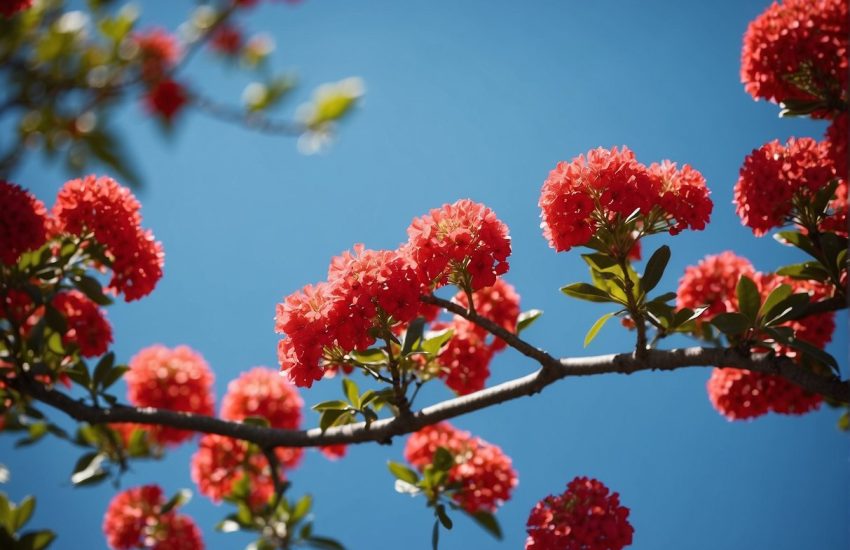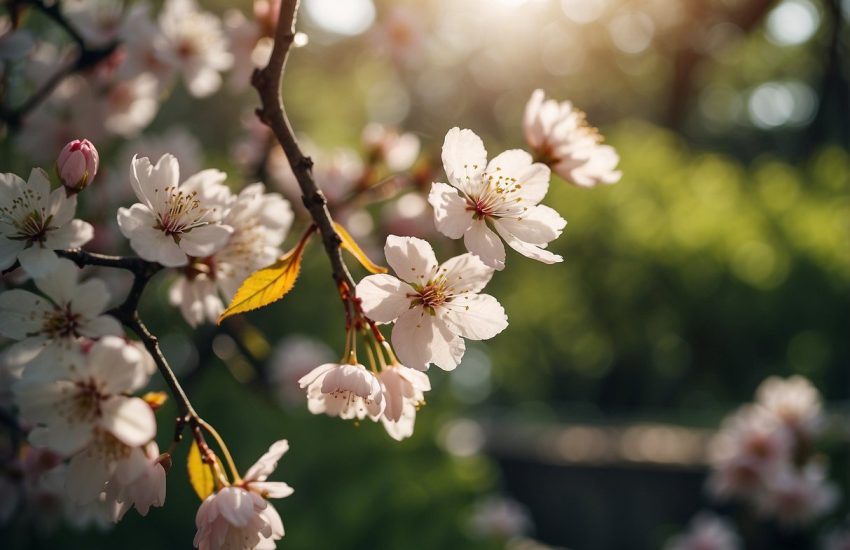White Flowering Tree Utah: A Guide to the Best Options for Your Garden
Utah is known for its stunning natural landscapes, and one of the most beautiful sights in the state is a white flowering tree in full bloom. These ornamental trees are a popular choice for gardens and public spaces, adding a touch of elegance and beauty to any outdoor space.

There are several types of white flowering trees that thrive in Utah’s climate, including the Northern Catalpa, Hawthorn, and Magnolia. Each of these trees has its unique characteristics, from the Northern Catalpa’s heart-shaped leaves to the Magnolia’s fragrant flowers.
White flowering trees are a popular choice for landscaping in Utah due to their versatility and beauty. They can be used as a focal point in a garden or as a backdrop for other plants and flowers. They also provide shade and shelter for wildlife, making them an excellent addition to any outdoor space. Whether you’re looking to add some elegance to your garden or simply enjoy the beauty of nature, a white flowering tree is an excellent choice for any Utah landscape.
Identifying White Flowering Trees in Utah
Utah is home to a variety of white flowering trees that add beauty and charm to the landscape. Identifying these trees can be challenging, but it is essential to choose the right tree for the right location. In this section, we will discuss popular varieties, native species, and their characteristics to help you identify white flowering trees in Utah.
Popular Varieties and Their Characteristics
Utah gardeners have a wide range of white flowering trees to choose from, including pear, magnolia, crabapple, and hawthorn. These trees offer fragrant white flowers that bloom in early spring, making them an excellent addition to any landscape.
Pear trees are known for their clusters of white flowers that bloom in early spring. These trees have glossy green foliage that turns a beautiful red in the fall. Magnolia trees, on the other hand, have large, showy white blossoms that bloom in early spring. They have large, dark green leaves that provide excellent shade during the summer months.
Crabapple trees are another popular variety that offers fragrant white flowers in the spring. These trees have beautiful pink buds that open to reveal white blooms. They also produce small, edible fruit that attracts wildlife, including birds and pollinators.
Hawthorn trees are known for their white flowers that bloom in clusters in the spring. They have beautiful dark green leaves that turn yellow in the fall. Hawthorns are also drought-resistant trees that thrive in various soil conditions and sunny locations.
Native Species and Their Habitats
Utah is home to several native white flowering trees that are well-suited to the region’s climate and soil conditions. These trees provide food and habitat for wildlife, including birds and pollinators.
One native species is the Serviceberry tree. These trees have white flowers that bloom in early spring and produce edible fruit that attracts birds. They are also drought-tolerant and grow well in various soil types.
Another native species is the Utah Mountain Mahogany. These trees have small white flowers that bloom in the spring and produce fruit that attracts wildlife. They are also an important food source for deer and other animals.
In conclusion, Utah gardeners have a variety of white flowering trees to choose from, including popular varieties and native species. These trees provide beauty, shade, and habitat for wildlife, making them an excellent addition to any landscape. By identifying these trees and their characteristics, gardeners can choose the right tree for the right location and enjoy their beauty for years to come.
Cultivation and Care for Optimal Growth

Soil and Water Requirements
White flowering trees in Utah will thrive in well-drained soil that is rich in organic matter. These trees are generally drought-tolerant, but they do require regular watering during the growing season to ensure optimal growth. It is recommended to water the trees deeply once a week, especially during hot and dry weather. However, be careful not to overwater them as this can cause root rot and other health issues.
Sunlight and Shade Preferences
White flowering trees in Utah prefer full sun to partial shade. They require at least 6 hours of direct sunlight per day to grow and bloom properly. When planting these trees, it is important to choose a location that receives adequate sunlight and is protected from strong winds. If the tree is planted in an area that receives too much shade, it may not bloom as well or may grow weak and spindly.
Pruning and Maintenance Tips
To keep white flowering trees in Utah healthy and looking their best, it is important to prune them regularly. Pruning helps to remove dead or damaged branches, promote new growth, and maintain the tree’s shape. It is recommended to prune these trees in late winter or early spring before new growth begins. When pruning, make sure to use sharp, clean tools and make clean cuts at a 45-degree angle.
In addition to pruning, it is important to maintain the overall health of the tree by providing it with proper nutrition and care. Fertilize the tree with a balanced fertilizer in the spring and fall, and make sure to mulch around the base of the tree to help retain moisture and suppress weeds. Keep an eye out for any signs of pests or diseases, and take action immediately if you notice any issues.
Overall, with proper cultivation and care, white flowering trees in Utah can be a beautiful and ornamental addition to any garden or landscaping project.


